- 18th Century Georgian Silk Needlework
- W. Avery & Sons Needle Case
- 1860s Pietra Dura Gilt Brass Trinket Box with Enamel Detailing
- Capelet and Fashion Accessories
- 1885 Samples of Diseased Organs
- French Grand Tour Églomisé Scent Bottles in Leather Bound Casket
- Gilt Metal Ladies Chatelaine
- Victorian Oil Painting
- Silver Bookmark
- Vienna Bronze Parrot Jewelry Stand
- Mahogany Winsor & Newton Watercolour Box
- Gold-Rush Themed 14k Gold Brooch
At Vintage Cash Cow, we are privileged to buy an array of fascinating antiques from our customers' boxes, each piece is a window into the past, revealing the intricate beauty, craftsmanship, and history of the era. The Victorian period, spanning from 1837 to 1901, was a time of great change and innovation in the arts, fashion, and daily life. In this blog post, we'll explore some of the incredible Victorian-themed treasures we've recently discovered, delving into their history, purpose, and the stories they tell. Let's take a closer look at these unique finds!
18th Century Georgian Silk Needlework
The first treasure that caught our eye was a stunning piece of Georgian silk needlework. While this technically predates the Victorian era, its influence and craftsmanship were still widely appreciated in Victorian times. The piece depicts two women, likely engaging in a conversation, with intricate details that showcase the artist's skill in silk embroidery.
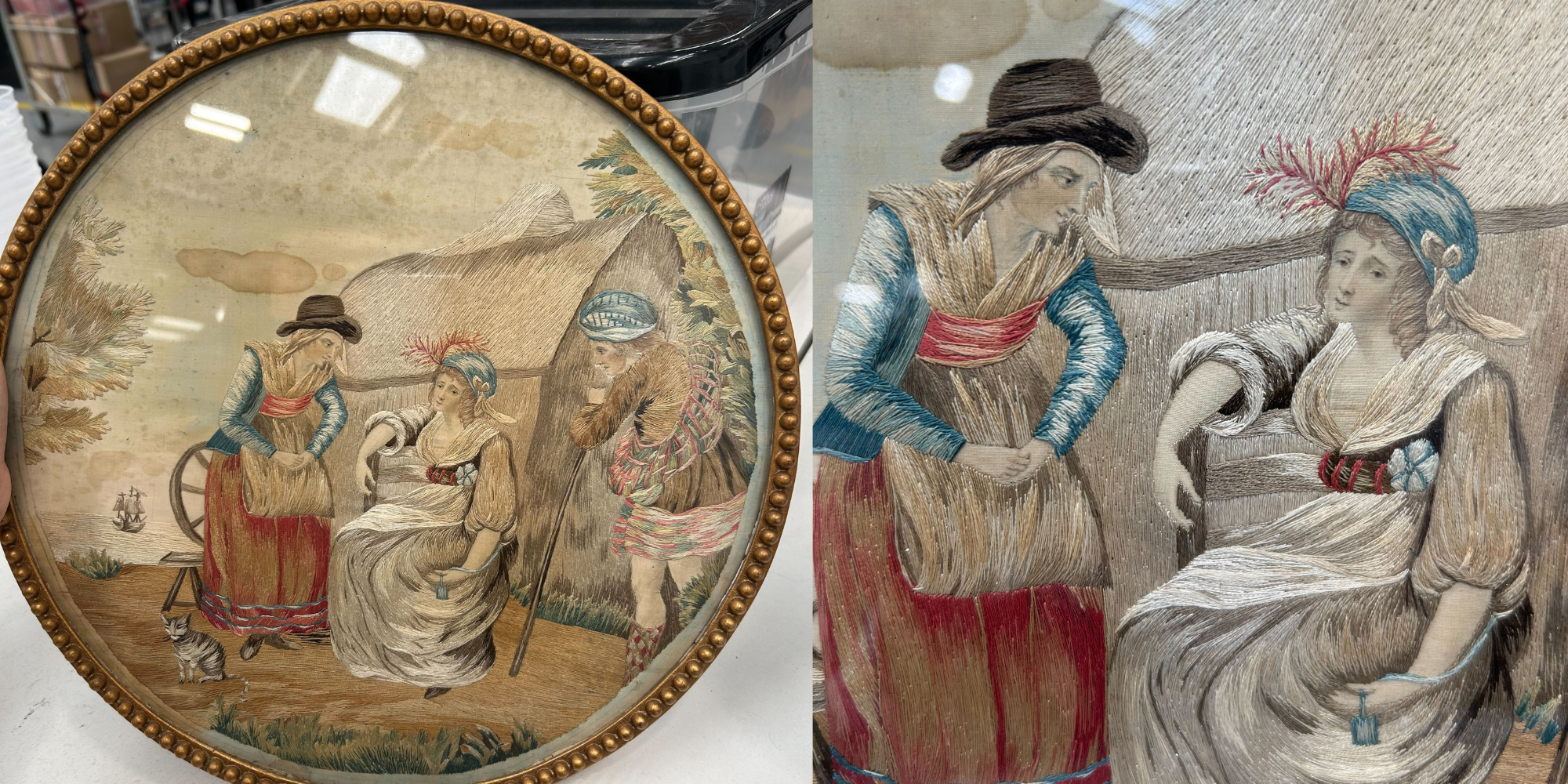
Silk needlework was a popular pastime for women in the Georgian and Victorian eras. The delicate art form was often taught to young girls as part of their education, particularly among the upper classes. Needlework was not only a way to showcase one's skills and creativity but also served as a form of moral and domestic education. Such pieces often depicted scenes from daily life, romantic imagery, or moral lessons.
This needlework is particularly valuable because it provides insight into the lives and social dynamics of women during this time. The use of silk thread adds a luxurious touch, indicating that this was likely a cherished piece, either as a gift or a display item in a home.
W. Avery & Sons Needle Case
The Victorian W. Avery & Sons needle case is a charming addition to our collection. These needle cases were practical yet beautifully crafted, often made from wood, bone, or metal, and used to safely and neatly store needles.
Cultural Importance and Craftsmanship: W. Avery & Sons was a well-known manufacturer of small, everyday items in the Victorian era, and their needle cases were prevalent among Victorian women who took great pride in their sewing skills. Needlework was an essential skill taught to women, not only as a practical task but also as a social activity. A needle case, therefore, was both a tool and a symbol of feminine accomplishment.

Why This Item Stands Out: This particular needle case is noteworthy for its ornate design, which reflects the Victorian tendency to beautify even the most mundane objects. The attention to detail and quality of materials used make it not only a practical item of its time but also a collectable piece of art, providing insight into the daily lives and values of Victorian women.
Each of these Victorian treasures offers a unique glimpse into the past, revealing the artistry, culture, and societal norms of the era. At Vintage Cash Cow, we are continually amazed by the stories these items tell and the connection they provide to a time long gone but still very much alive through these remarkable objects.
1860s Pietra Dura Gilt Brass Trinket Box with Enamel Detailing
Next, we have an exquisite Pietra Dura gilt brass trinket box from the 1860s, adorned with enamel detailing. This piece was made in Rome, Italy, by the renowned artist Cesare Roccheggiani.
Pietra Dura, an Italian term meaning "hard stone," refers to the art of inlaying semi-precious stones into intricate designs. This technique was favoured during the Renaissance and saw a resurgence in the Victorian era as part of the Grand Tour tradition, where wealthy Europeans collected art and antiques from their travels. The trinket box, often used to store jewellery or small personal items, showcases the elegance and attention to detail that defined Victorian decorative arts.
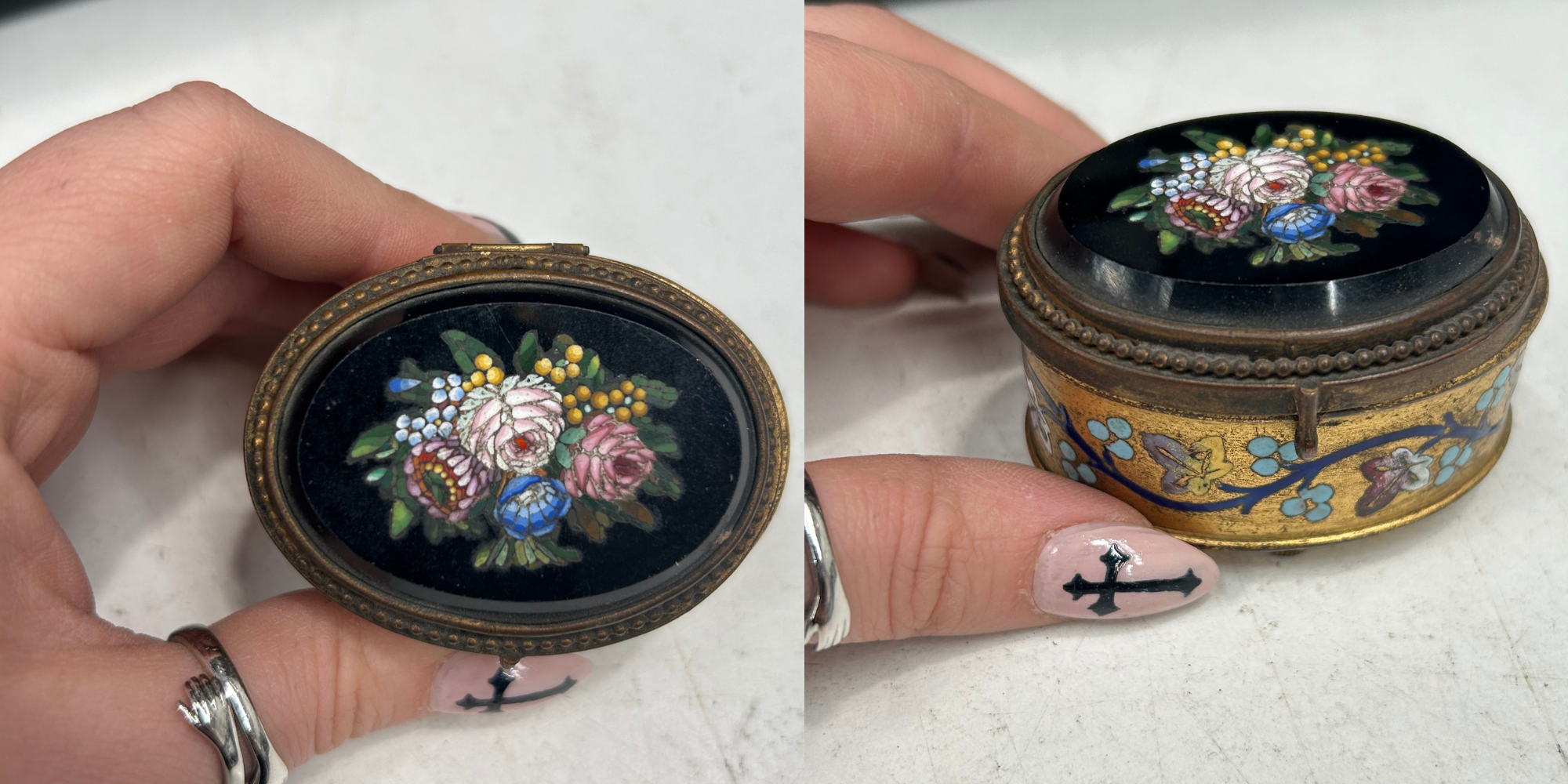
During the Victorian era, there was a fascination with collecting items that reflected the grandeur of European history and art. Trinket boxes like this one were not only functional but also served as a display of wealth and refinement. The combination of gilt brass and enamel work would have made this piece a standout in any Victorian parlour.
Capelet and Fashion Accessories
The Victorian era was marked by distinctive fashion, and one of our most intriguing finds is a collection of Victorian fashion accessories, including a velvet capelet, long gloves, a lace fan, and various brooches and belts.

Victorian fashion was characterised by its formality and elaborate styles. The capelet, a short cape that draped over the shoulders, was a popular accessory for women. Made of velvet or lace, it added a touch of elegance to any outfit. Gloves were an essential part of a lady’s wardrobe, signifying modesty and status, while fans were both practical and ornamental, used to cool oneself and communicate discreetly in social settings.
Fans, for instance, had their own "language" in Victorian society. The way a woman held or moved her fan could convey different messages, from flirtation to disdain. The accessories found in this collection highlight the elaborate fashion of the time and the social codes that dictated how and when these items were used.
1885 Samples of Diseased Organs
An unusual but historically significant find is a set of Victorian-era samples of diseased organs, meticulously labelled and stored in a wooden case. These samples, dated to 1885, were used for medical study and education.
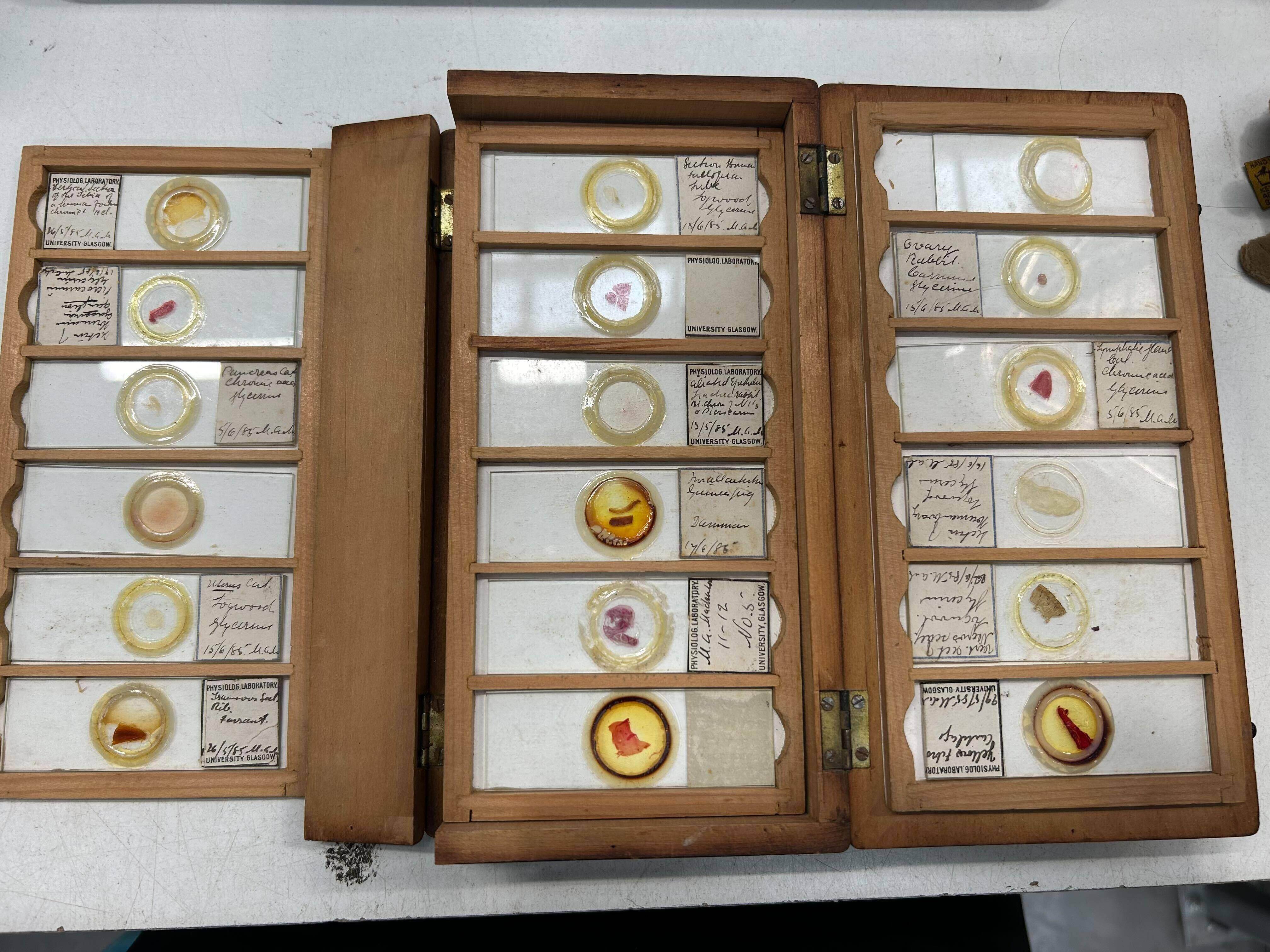
During the Victorian era, there was significant progress in the field of medicine, driven by a growing understanding of anatomy, pathology, and hygiene. The Victorian fascination with science and the macabre is evident in the collection and study of pathological specimens. Such samples were used in medical schools to educate future doctors and to further the study of human anatomy and diseases.
This collection provides a glimpse into the medical practices of the time and the Victorian obsession with understanding the human body in both health and disease. It also reflects the broader cultural interest in death and the afterlife, which was prevalent in Victorian society due to high mortality rates and frequent public health crises.
French Grand Tour Églomisé Scent Bottles in Leather Bound Casket
Another exquisite find is a pair of Victorian French Grand Tour Églomisé scent bottles housed in a luxurious leather-bound casket. "Églomisé" refers to a French technique of reverse painting on glass. Scent bottles were a popular item among Victorian women, who would carry perfumes to mask unpleasant odours in public spaces. The Grand Tour, a traditional trip around Europe undertaken by mainly upper-class European young men, often included the collection of fine objects like these scent bottles as souvenirs.
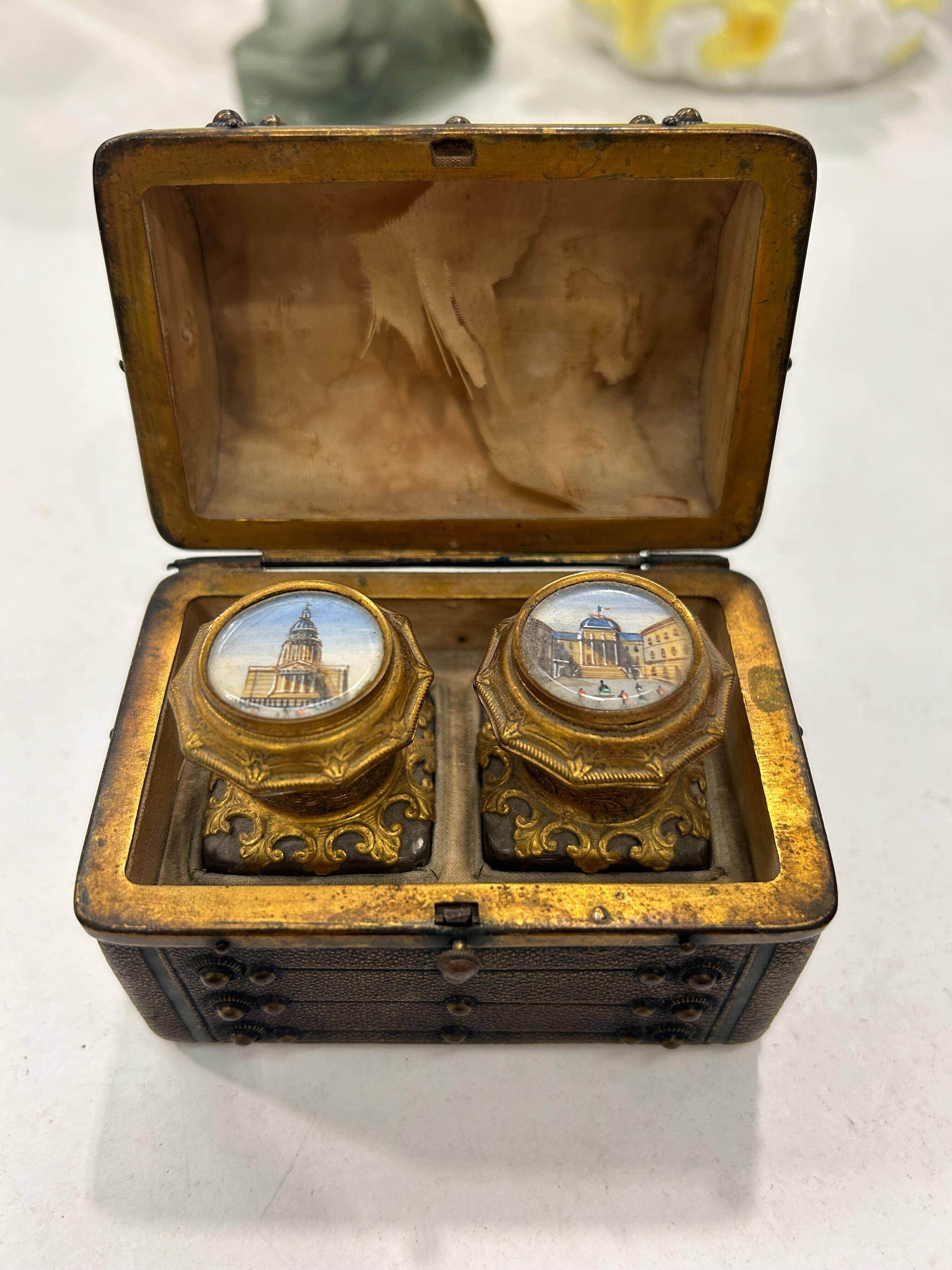
These bottles are not only beautiful but also reflect the Victorian penchant for personalisation and luxury. The leather-bound casket adds an extra layer of opulence, making it a statement piece that would have been proudly displayed.
Gilt Metal Ladies Chatelaine
The Victorian gilt metal ladies' chatelaine is a fascinating accessory with both functional and decorative appeal. A chatelaine was a decorative belt hook or clasp worn at the waist, used to carry household tools such as scissors, thimbles, watches, and keys. The term originates from the French word "châtelaine," meaning the mistress of a castle, reflecting the domestic authority the wearer had over their household.
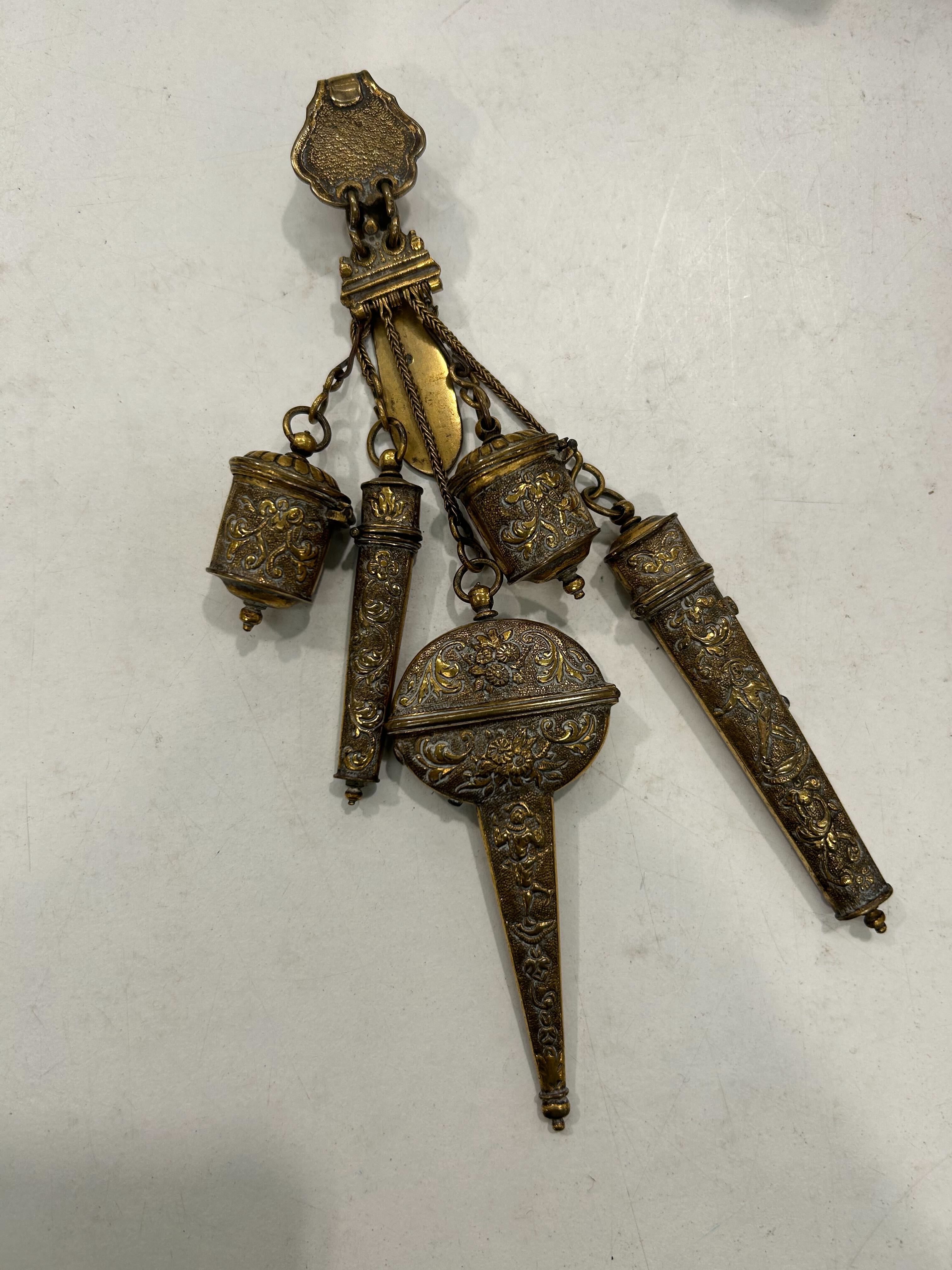
Chatelaines were practical but also became a fashionable accessory in Victorian times, often elaborately decorated and made from precious metals and stones. They are a testament to the daily lives of Victorian women, who managed the household and needed their tools close at hand.
Victorian Oil Painting
Among the antique treasures, we found a charming Victorian oil painting depicting two young boys, one reading a newspaper while the other seems to be asleep. Victorian art often focused on realism, capturing everyday scenes and the human condition. This painting is a wonderful example of genre painting, a style that depicts ordinary people engaged in common activities. Art during this period was often used to convey moral lessons, and this painting could symbolise innocence, learning, or the simple pleasures of youth.

Silver Bookmark
A delicate and elegant Victorian silver bookmark adds a touch of refinement to this collection. Bookmarks, though simple, were an essential item for avid Victorian readers who were known for their love of literature, with the period seeing a significant rise in the publication of novels, poems, and serial stories. A silver bookmark would have been a cherished item, especially among the educated upper classes. Many of our customer boxes include a variety of silver antiques such as jewellery and cutlery, however this silver bookmark was a truly rare gem!
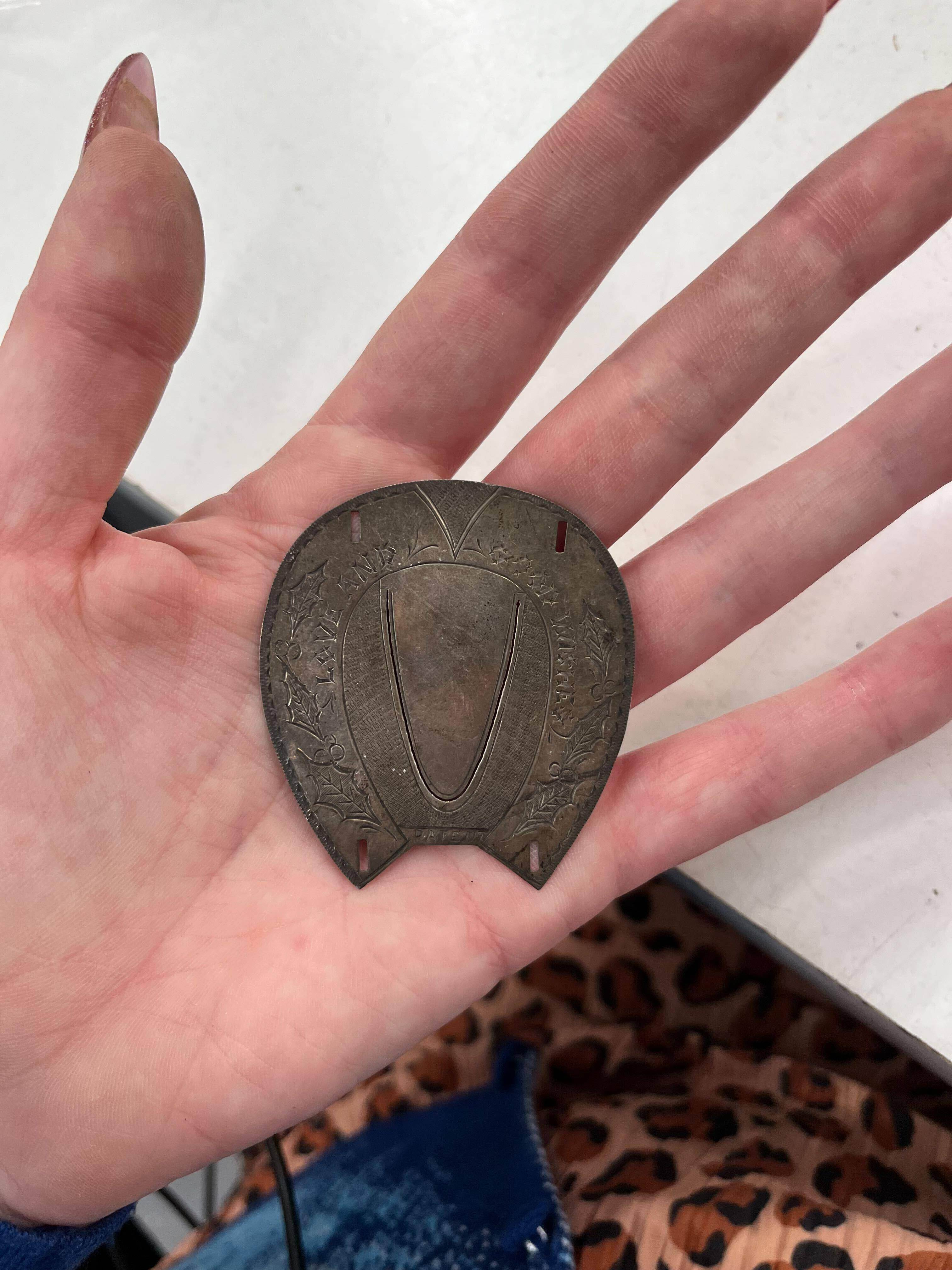
The intricate design of this bookmark suggests it was a special item, perhaps given as a gift. Silver, being a precious metal, also indicates that the owner valued both their books and the act of reading highly.
Vienna Bronze Parrot Jewelry Stand
Vienna bronze sculptures were highly sought after during the 19th century, renowned for their intricate detail and lifelike representations. These pieces were often small and served as decorative items in homes. A jewellery stand like this one would have been both a functional item and a delightful piece of decor, reflecting the Victorian love for nature and animals.
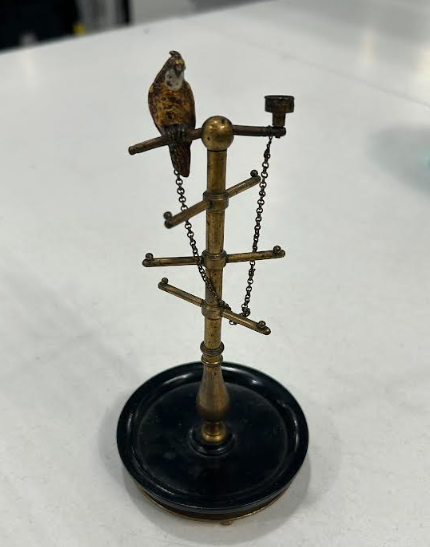
Bronze sculptures, particularly of exotic animals, were popular among the Victorian middle and upper classes, who were fascinated by the exotic and the natural world. This parrot, perched elegantly, would have added a whimsical yet sophisticated touch to a lady's vanity or dressing table.
Mahogany Winsor & Newton Watercolour Box
Winsor & Newton, established in 1832, quickly became renowned for their high-quality artist materials. This beautifully crafted mahogany box, complete with original paint pans and mixing palette, would have belonged to a serious amateur or professional artist. During the Victorian era, watercolour painting was a popular hobby among the middle and upper classes. The mahogany box itself reflects the Victorian era's emphasis on quality and durability, with finely joined wood and brass fittings.
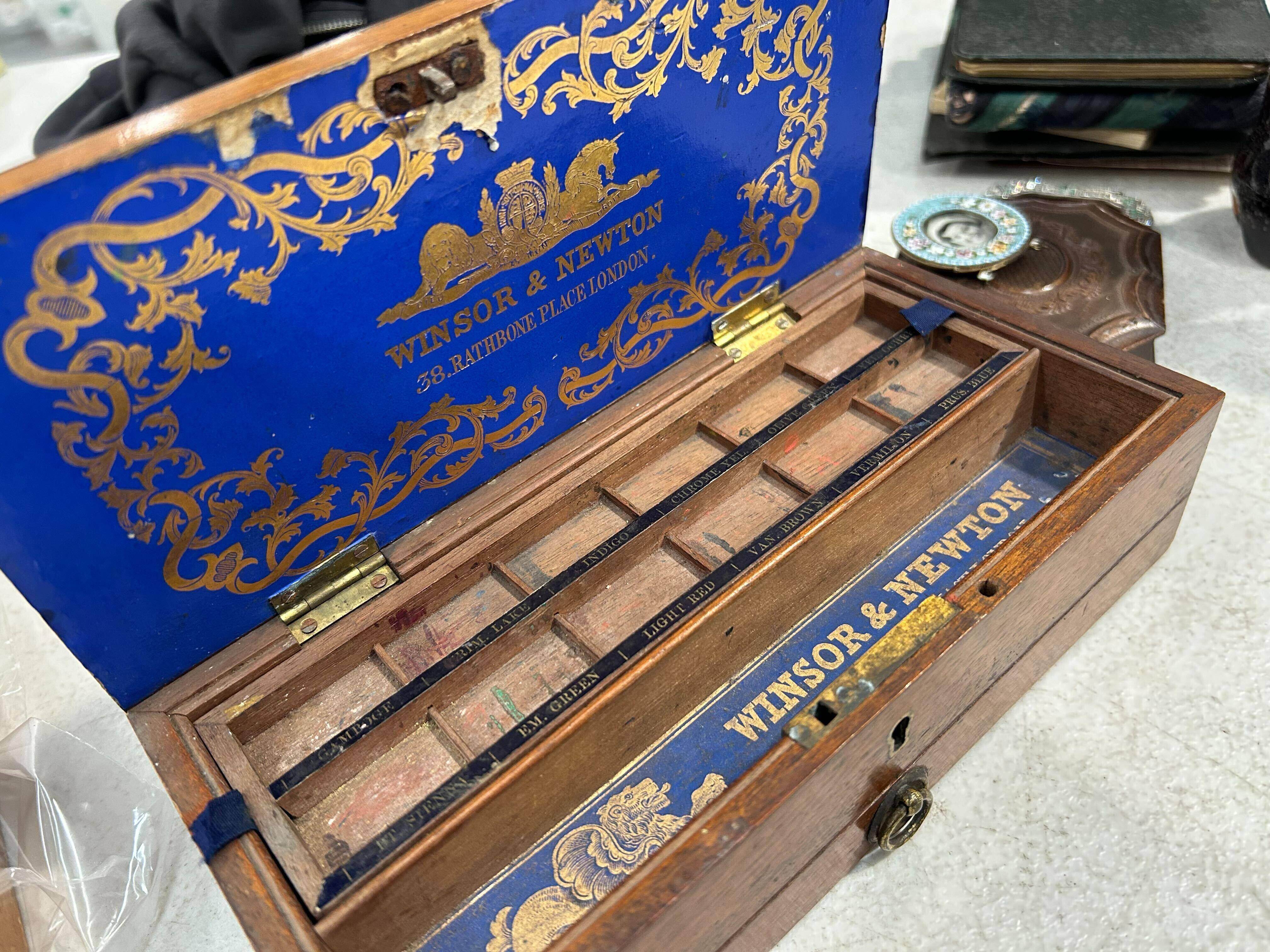
This watercolour box is not just an artist's tool but also a piece of history that reflects the period's cultural values. The meticulous design and the preserved condition make it a sought-after collector’s item, representing the intersection of fine art and Victorian craftsmanship.
Gold-Rush Themed 14k Gold Brooch
One of the more unique finds in our collection is a Gold-Rush themed 14k gold brooch. This brooch, crafted with intricate detail, features a shovel, pickaxe, and pan—all symbols associated with the California Gold Rush of the mid-19th century. The small pieces of gold within the pan add a realistic touch, making this piece a fascinating relic of its time.
The California Gold Rush of 1848-1855 was a pivotal moment in American history, attracting people from all over the world in the hopes of striking it rich. Jewellery items like this brooch were created to commemorate the adventurous spirit and the booming prosperity of the era. Owning such a brooch would have been a fashionable way to display a connection to the thrilling events of the time, whether directly or through shared cultural fascination. Its fine craftsmanship, with tiny gold nuggets embedded within the design, shows a blend of artistry and thematic relevance, making it a rare and valuable item for collectors today.
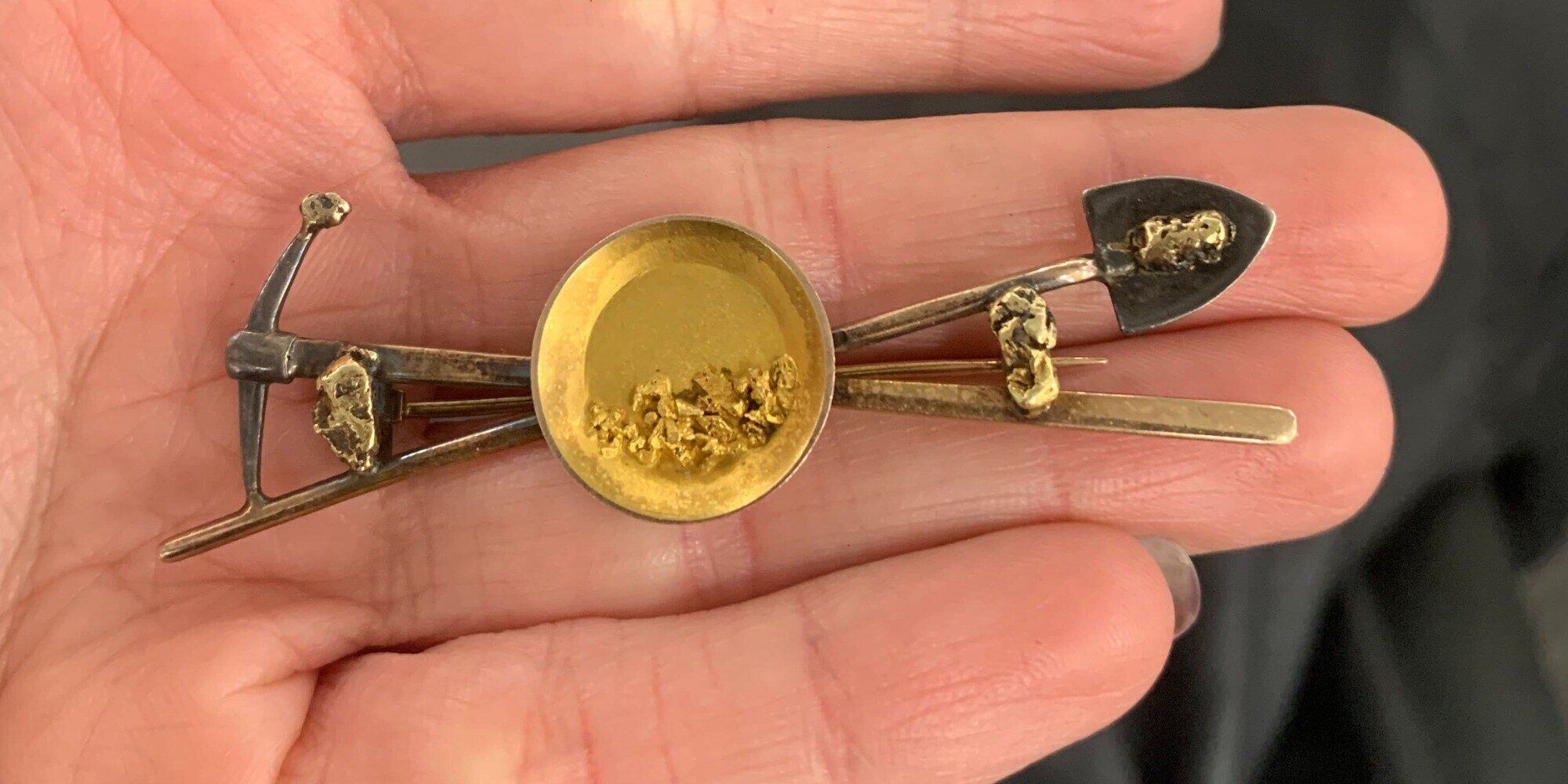
At Vintage Cash Cow, every box we open is an adventure into history - these Victorian treasures are more than just antiques - they are stories waiting to be told, windows into the lives, values, and aesthetics of a bygone era. From the delicate silk needlework and the luxurious trinket boxes to the practical yet ornate chatelaines and the whimsical bronse parrot, each piece reveals a unique aspect of Victorian life and culture. We hope you’ve enjoyed this journey through time with us, exploring the beauty and intrigue of these incredible finds. Whether you're a collector, a history enthusiast, or just someone who appreciates the artistry of the past, these treasures remind us of the rich legacy that continues to inspire and captivate.

.png?width=624&height=405&name=Untitled%20(1500%20x%201000%20px).png)